The rise of the jet set and Pan Am in-flight menus
The jet age revolutionized air travel in the 1960s. Pan Am took it to the next level with Jacques Liozu’s illustrated menus featuring maps of global destinations.
The 1960s saw a new era for commercial aviation. Scientists and engineers had been working on jet engines for decades and, gradually, the new technology managed to become part of commercial aviation. In 1949, the British de Havilland DH.106 Comet became the first jet-powered aircraft to operate civilian flights. Many other manufacturers followed suit throughout the 1950s and, by the 1960s, they had become the norm.
Why was the jet engine so important? Because it allowed longer flights, with more passengers and at a higher cruising speed. This combination made this mode of transport affordable, although it was still an exclusive privilege for the wealthy. In fact, the term jet set1 was coined in the late 1950s to refer to that group of people who could afford to travel in the new jet-powered aircraft.
Since its foundation in 1931, Pan American Airlines (Pan Am) had been one of the most relevant commercial airlines in the United States and the main one for international flights in the country. It was therefore imperative for the company to quickly jump on the bandwagon of this new way of travelling2. The airline’s inaugural flight took place on a Boeing 707 from New York to Paris on October 26, 19583, reducing the duration of the journey from almost 15 to just over 8 and a half hours.
That first flight was followed by many others to major cities around the world, leaving behind long journeys with multiple and uncomfortable stopovers. By 1964, Pan Am was already operating direct flights between San Francisco and Tokyo, New York and Istanbul, and Los Angeles and London.
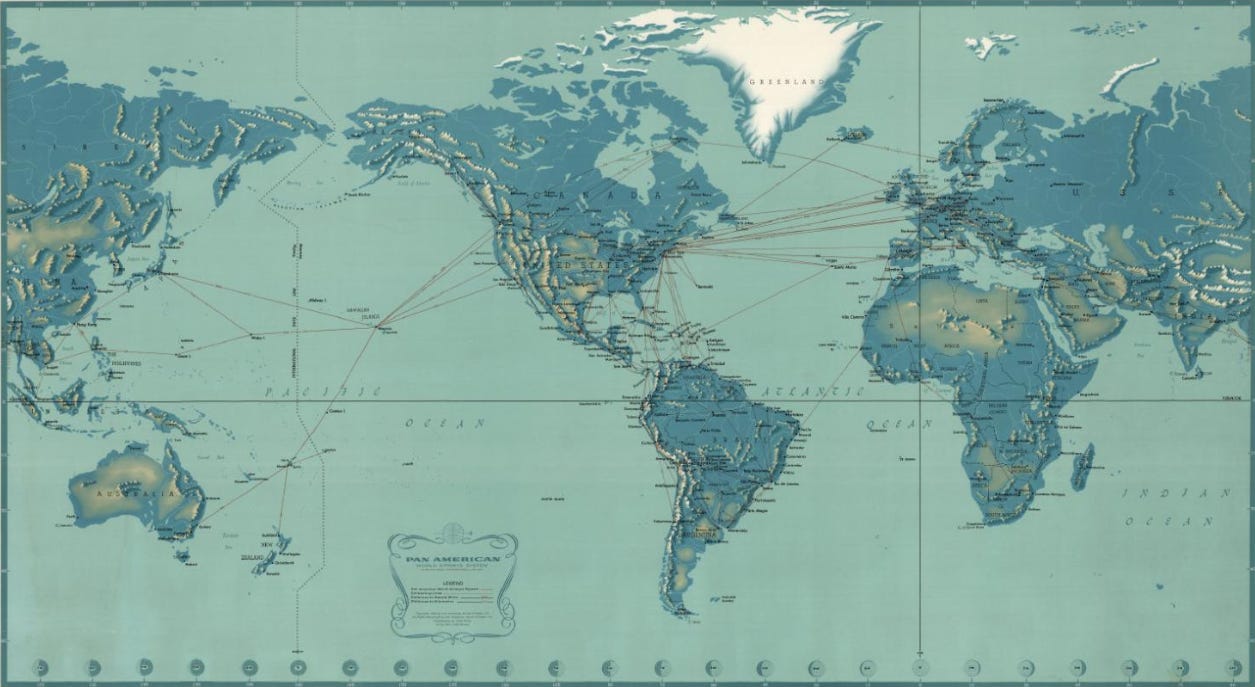
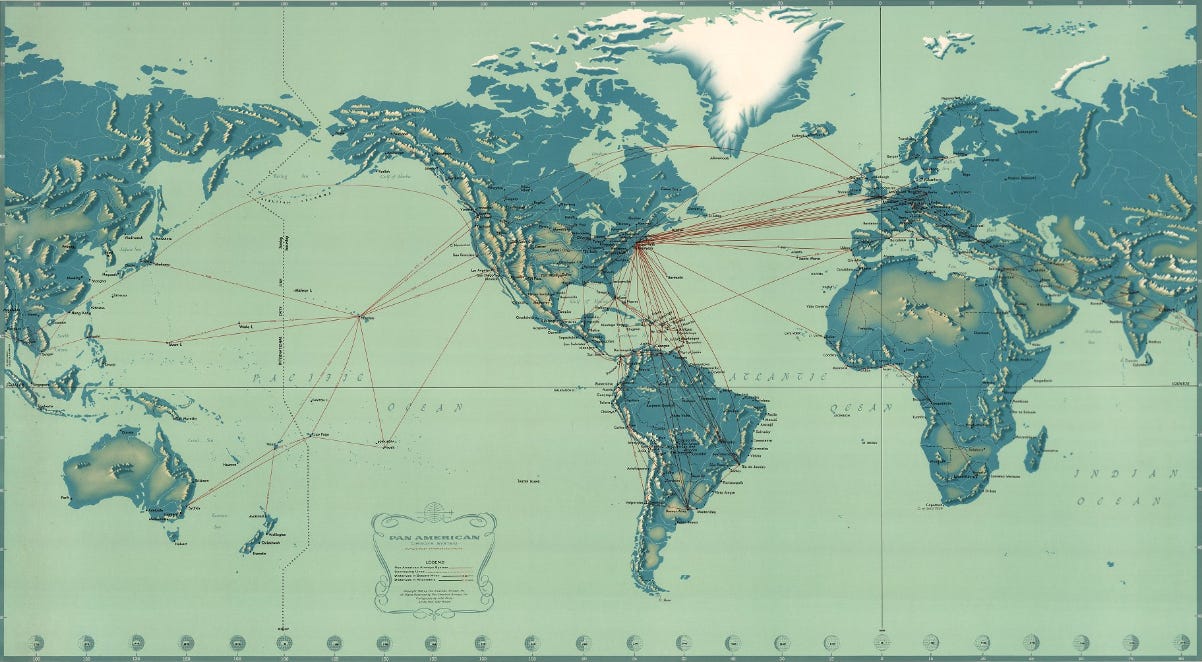
This new way of flying had a strong impact on some places that had become stopovers over the decades, facilitating long-haul routes. Such was the case of Iqaluit4, the airport on Frobisher Bay, which went from being an important hub for commercial airlines to being a simple regional airport with limited use.
Jet engines opened up a world of possibilities, and aviation companies soon realised that they had to sell it as best they could. In the 1960s, Pan Am hired Jacques Liozu to design a series of in-flight menus with maps that would allow the company's passengers to dream and awaken the desire to travel around the world.
Jacques Liozu's in-flight menus
Jacques Liozu was a French illustrator who lived from 1910 to 1974. Throughout his life he illustrated various maps, mainly for postcards or for educational purposes, in France and Spain. His work did not simply focus on delimiting coasts and borders, but he had a habit of exploring in detail the natural and cultural wonders of each region he painted. His work for Pan Am consisted of nine maps that were used as covers to accompany the menus that the crew gave to passengers on each flight.
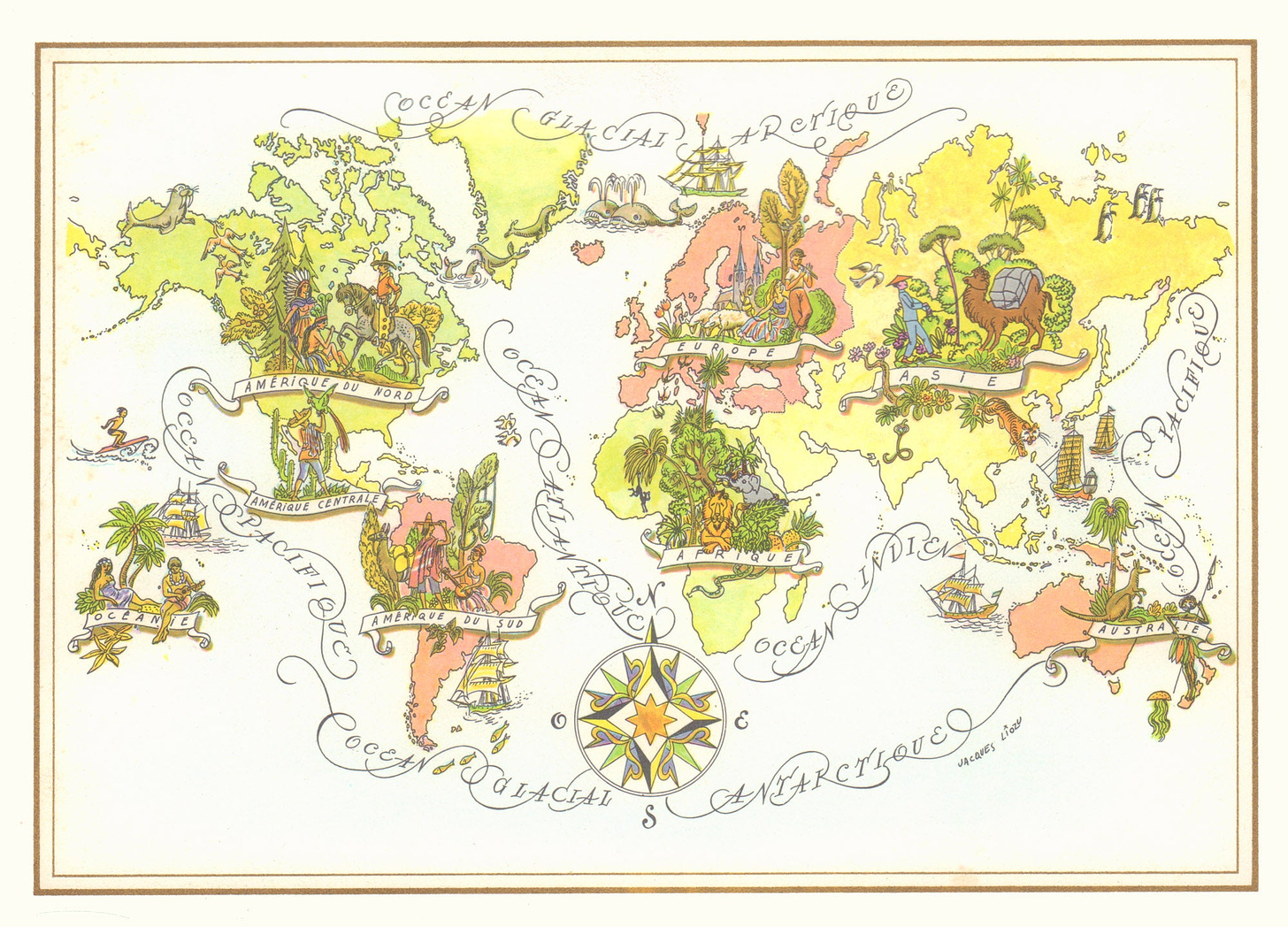
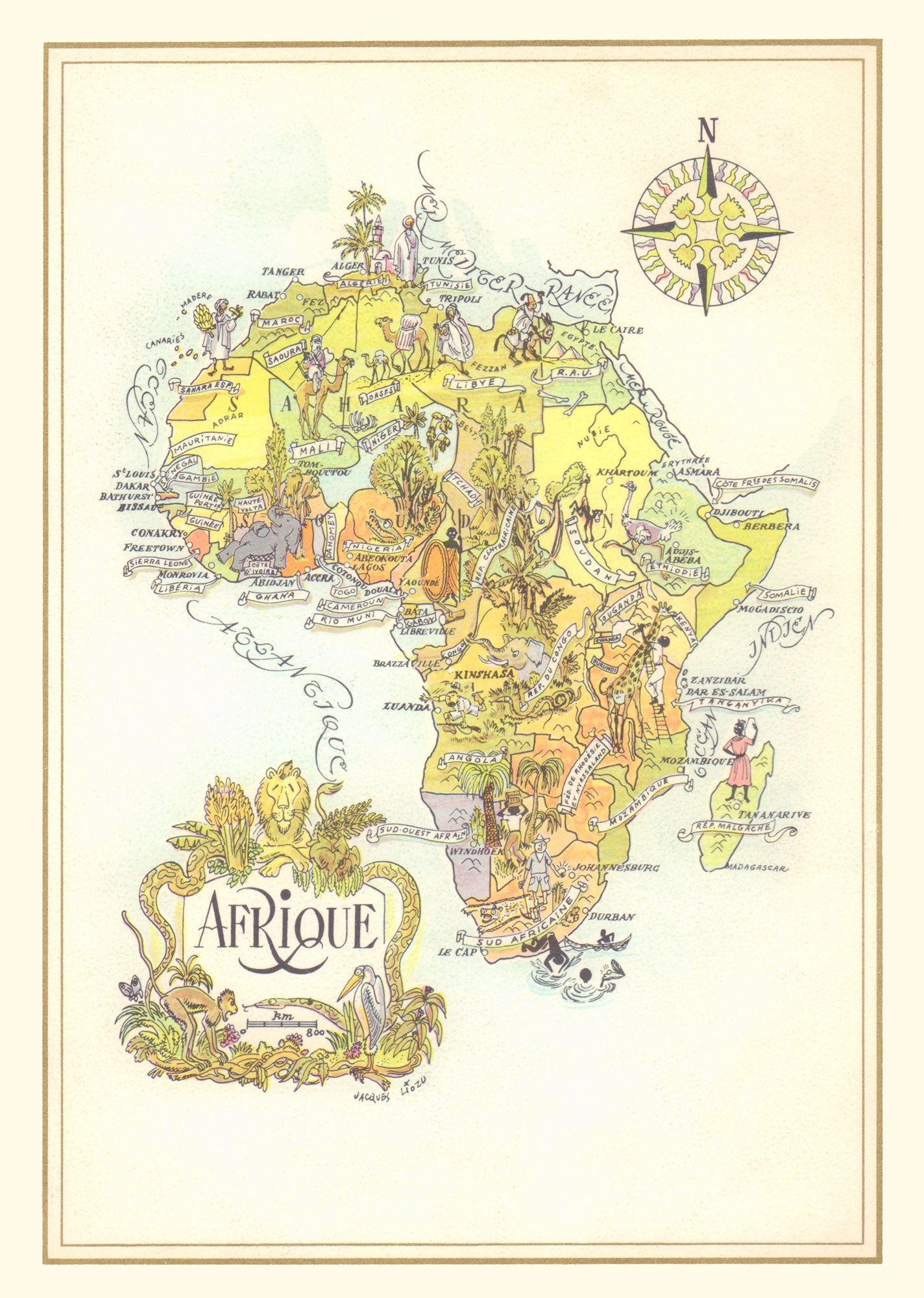
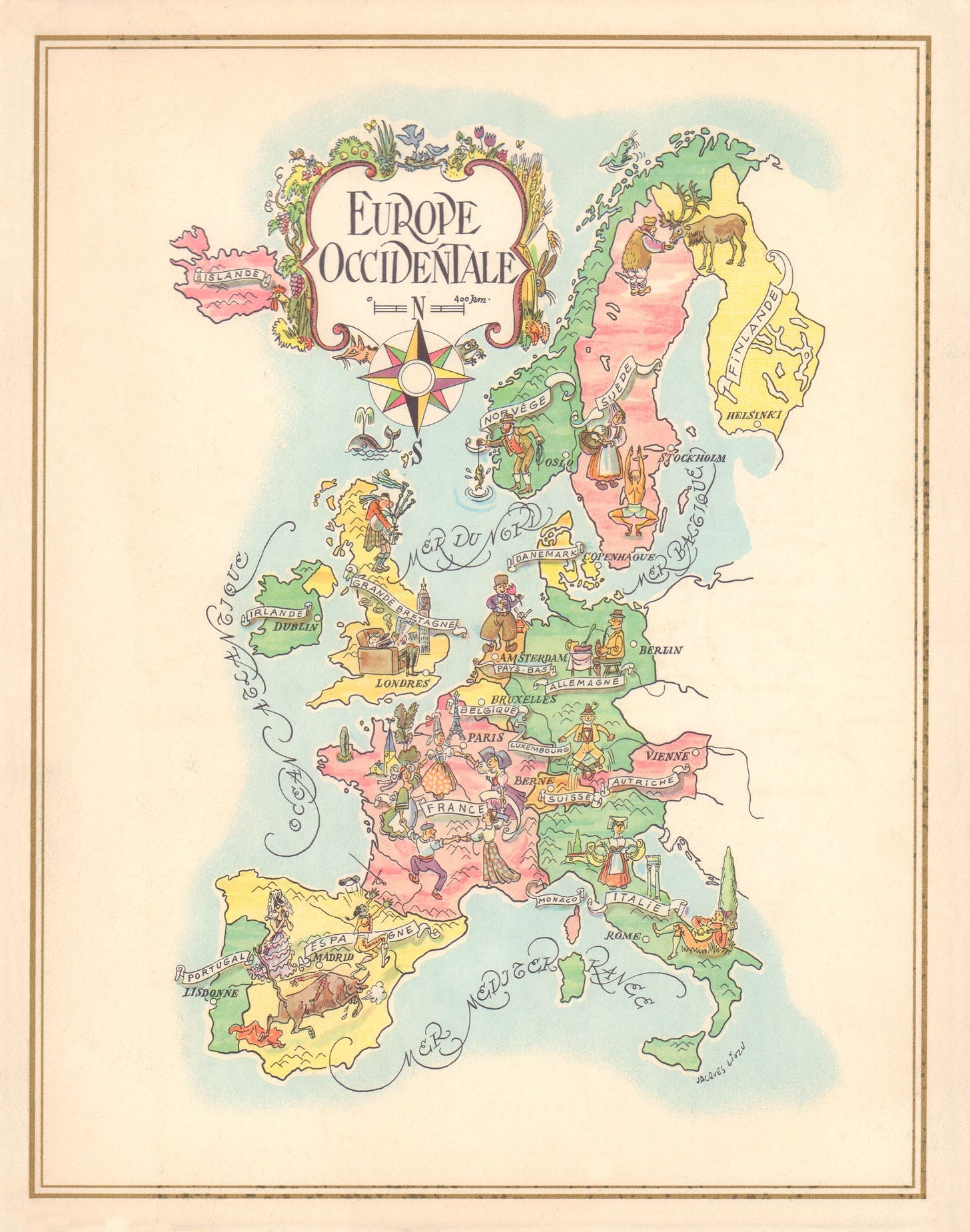
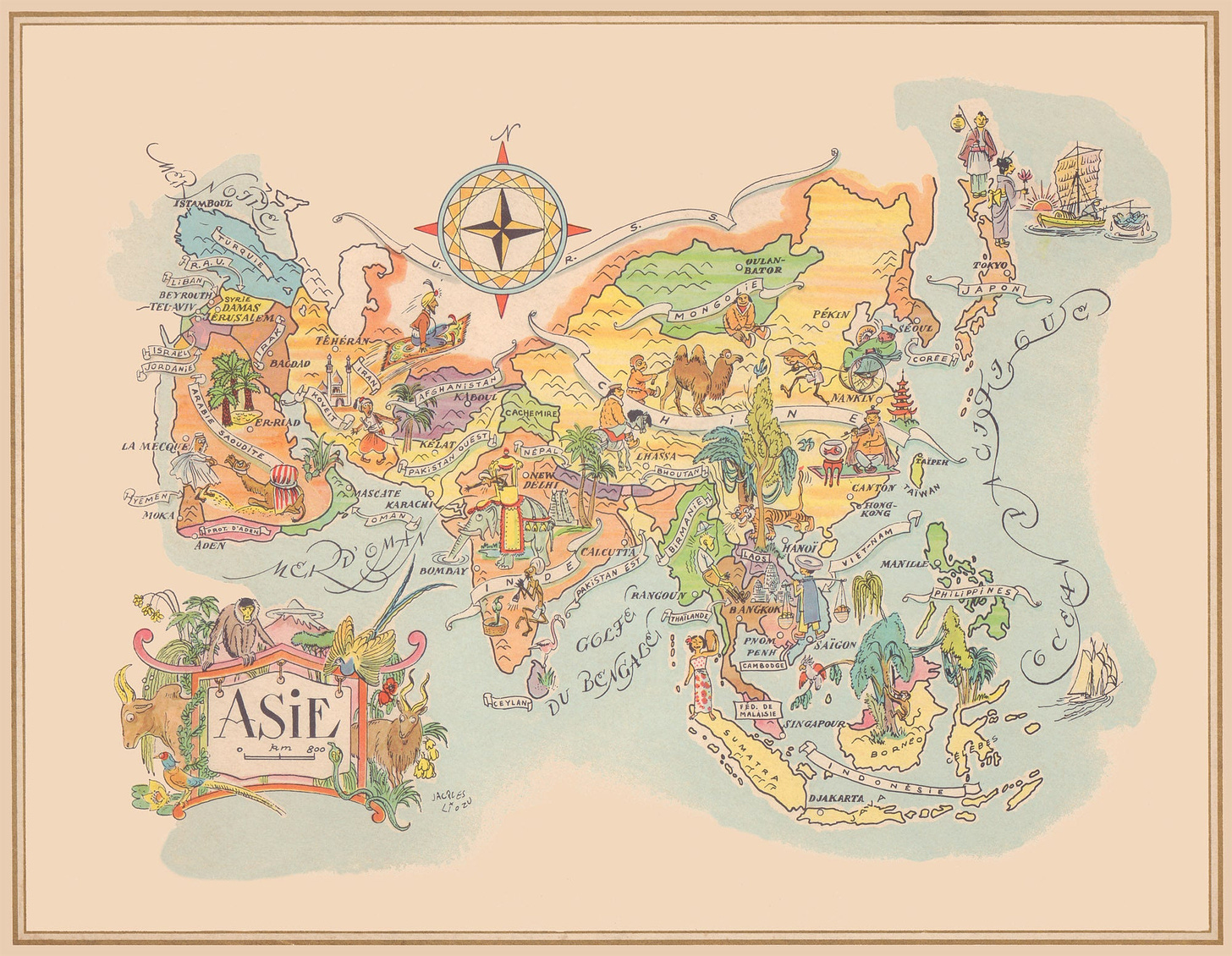
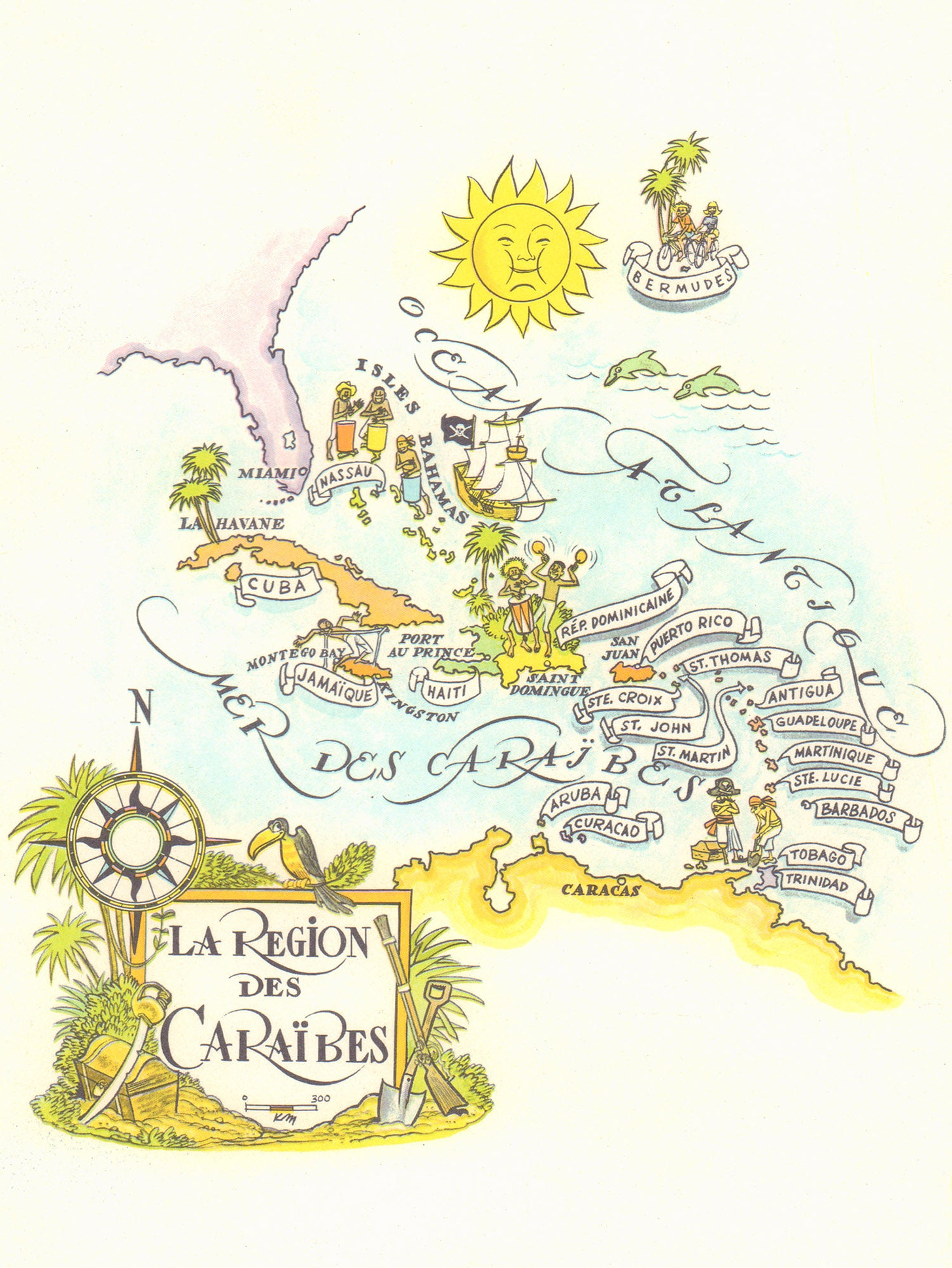
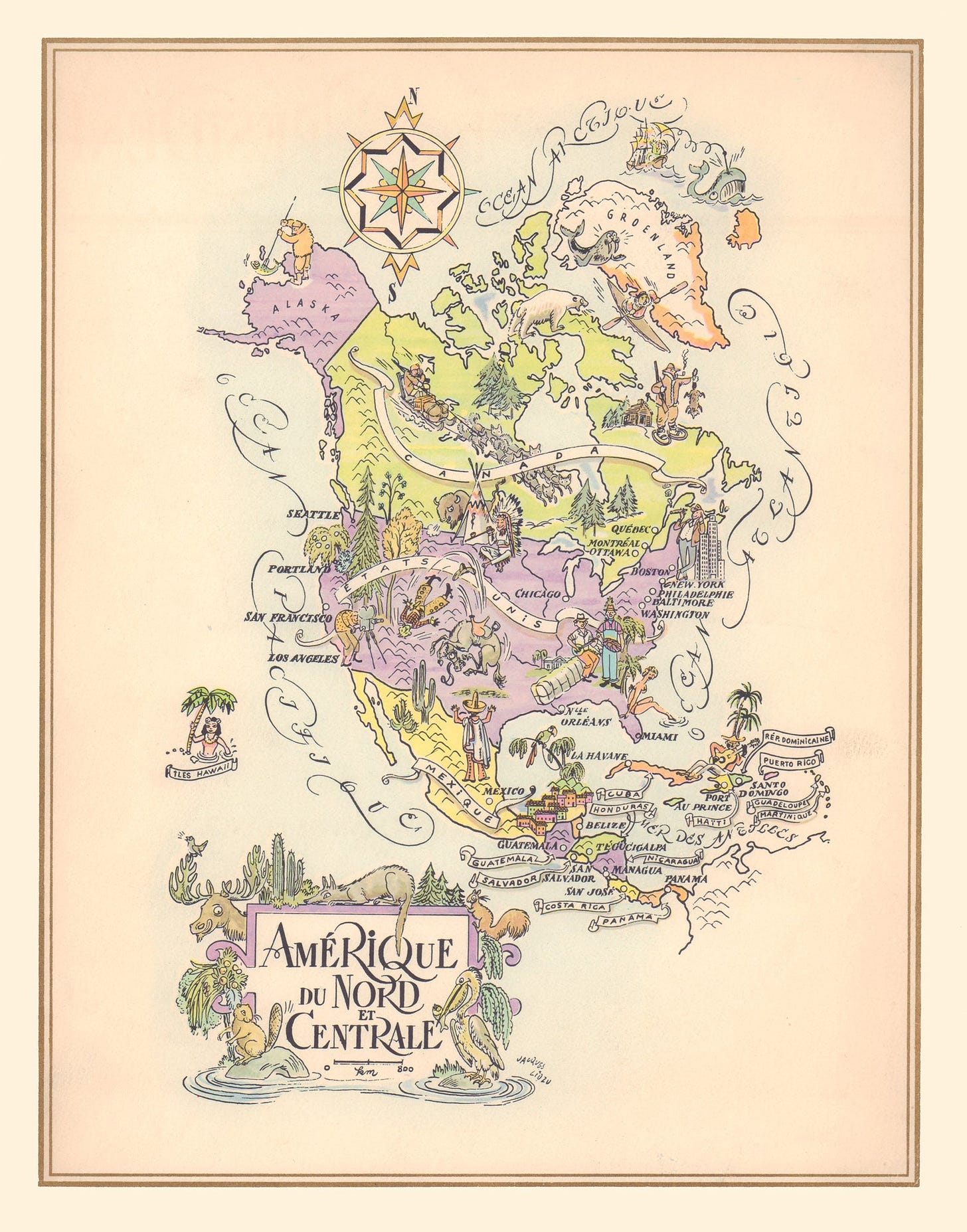
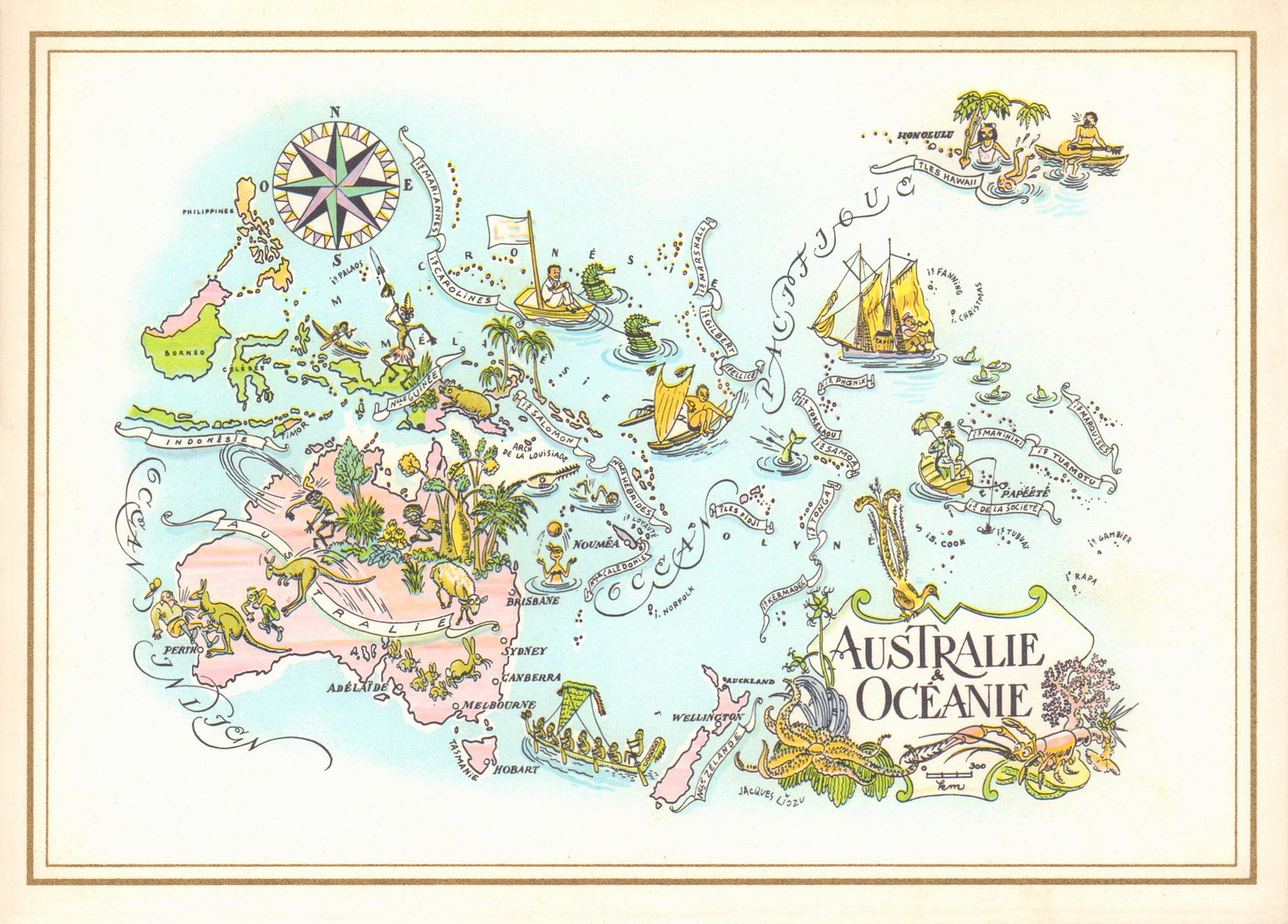

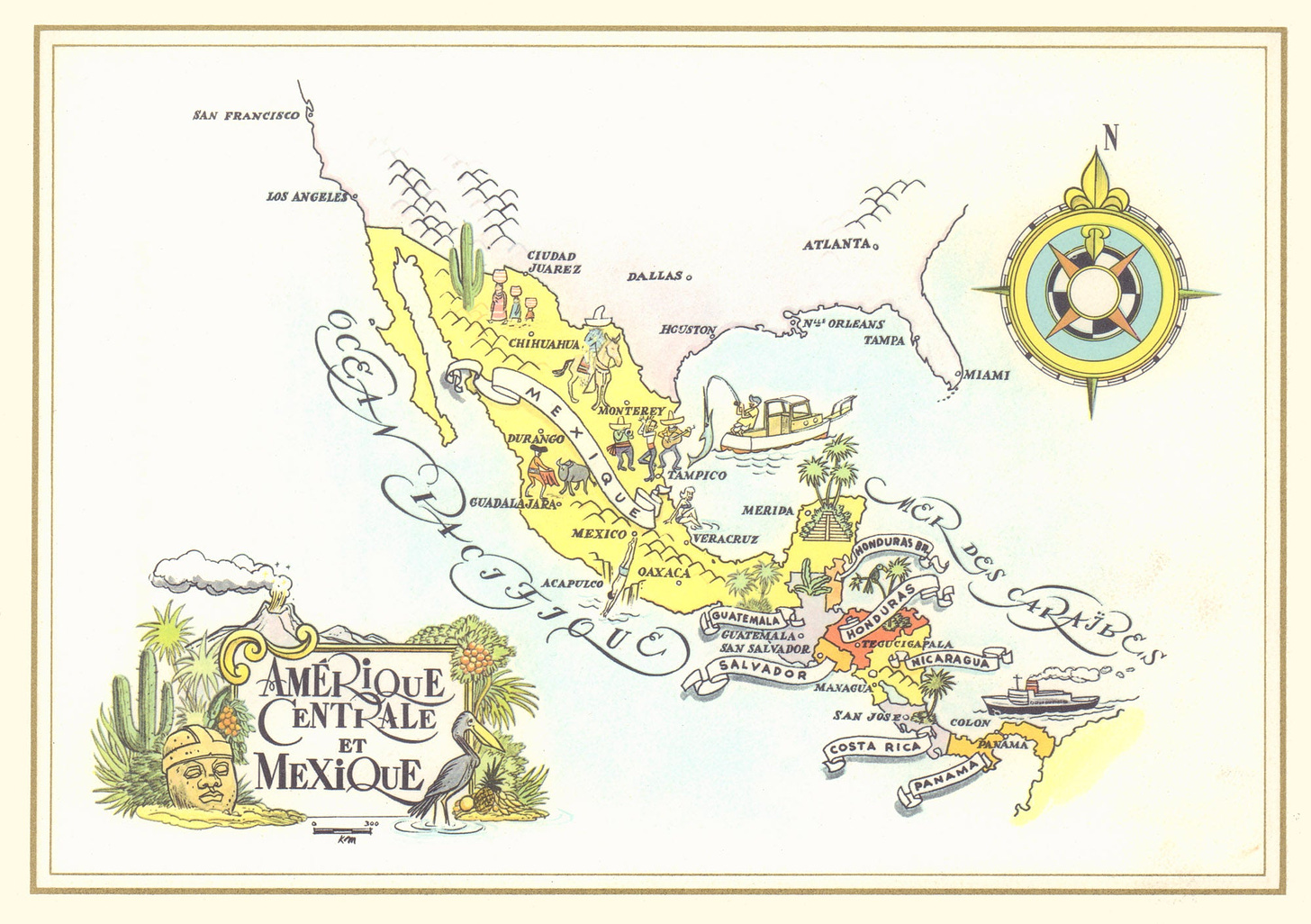
The contents of the menus, what lay behind these marvellous maps, exuded luxury from every pore. We are not talking about a portion of rice with chicken and a coffee, which some of you may have enjoyed on transoceanic flights, but a more typical restaurant menu: an appetiser or canapé, a salad, a plate of rice or pasta, a fish or meat dish, cheese and dessert. All of this from the hand of some of the most exclusive restaurants in Paris, in some cases. Economy class passengers usually had to pay for alcohol and cigars5, but for those travelling in first class, it was all included.
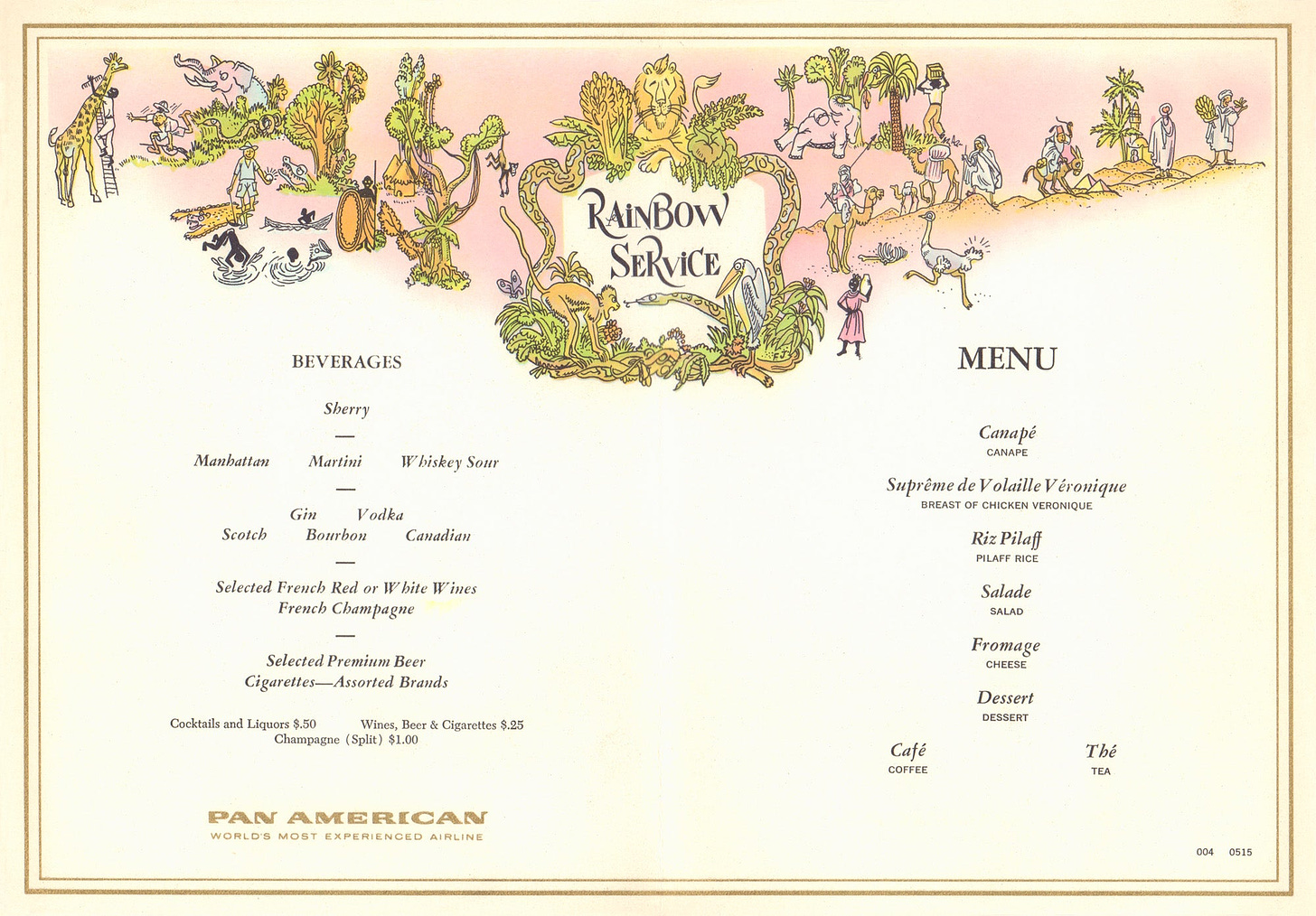
Epilogue
Capitalism had its way and soon commercial flights evolved to be less expensive and bring in more profits. This went hand in hand with additional seats, to carry more passengers, with less and less space for each of them. And, as you may already suspect, it also affected the quality and quantity of the food. In 1987, the memorable discovery of American Airlines appeared in all the news, claiming that after removing an olive from the salads of all its passengers, they had managed to reduce costs by more than 40,000 dollars a year6.
This quickly became a slippery slope. Where you can remove one olive, you can just as easily remove two olives, or the whole salad altogether. It was a matter of years before in-flight food completely disappeared from economy class and was reserved for the more exclusive classes. With the growing popularity of low-cost airlines throughout the 1990s, what was once a saving on food soon became a new way of generating profit: paying for a soft drink, paying for checked luggage, paying for seat selection, paying for check-in at the airport…
The jet set now flies in private aeroplanes. And who knows, maybe there you can still find luxuries like the wonderful Jacques Liozu maps on Pan Am in-flight menus.
Jet engines are known as jet engines in English. From this came the term jet passenger service, from which the concept of jet set was finally derived.
Pan Am remained the most important commercial airline in the United States until it went bankrupt in 1991.
In this article, you can find more details about that first Pan Am flight with a jet engine.
Current capital of Nunavut, Canada, and known at the time as Frobisher Bay.
Smoking on aeroplanes was normalised for decades. In the 1970s, non-smoking sections were created on aeroplanes. In the late 1980s, some airlines banned smoking on short trips. By 1997, the European Union completely banned smoking on aeroplanes operating in any member state, and three years later, the United States took the same measure.
This news item is still occasionally brought up as an example of how to run a business. Here is an example in Forbes from a few years ago. Personally, I think we have to be cautious when considering it.





A fun read and charming art work. My wife was a Pan Am stewardess in mid '60s. A nice flashback to share with her.
Oh I love these maps by Jacques Liozu! Thanks for sharing and keeping it fascinating.